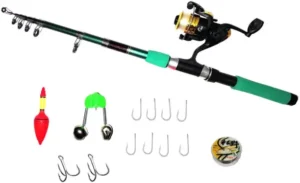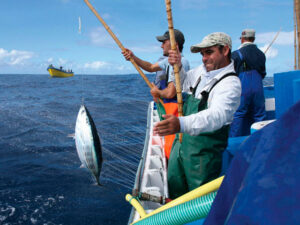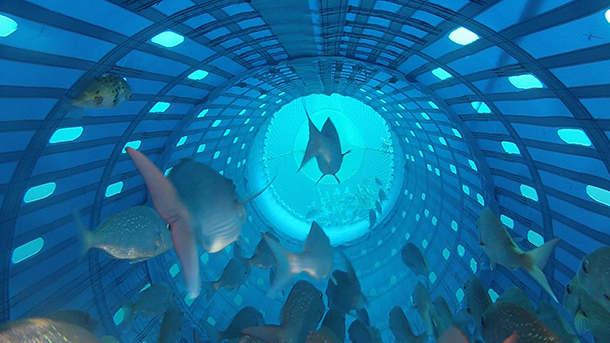Fishing is one of the world’s oldest and most important industries, providing food and livelihoods to millions of people worldwide. However, like many industries, fishing is facing a host of challenges, from overfishing to climate change. To address these challenges, the fishing industry is turning to innovation and technology. In this article, we will discuss some of the innovations to watch out for in 2023 that could shape the future of fishing.
Innovations
Autonomous Fishing Boats: Autonomous fishing boats are set to revolutionize the fishing industry by reducing labour costs, increasing efficiency, and decreasing environmental impact. These boats can operate without a human crew and are equipped with advanced sensors, GPS, and artificial intelligence software that can analyze data in real-time to optimize fishing operations. For instance, these boats can identify the best fishing grounds, adjust their speed and direction based on weather conditions, and even detect and avoid marine life to reduce bycatch.
Advanced Fishing Gear: Fishing gear has remained relatively unchanged for many years, but new technologies are being developed that could make fishing more efficient and sustainable. One such technology is the use of smart fishing nets, which are equipped with sensors that can detect the size and species of fish caught in the net. This allows fishermen to selectively harvest only the fish they want, reducing bycatch and protecting endangered species.

Sustainable Aquaculture: Aquaculture is the practice of farming fish and other aquatic organisms, and it is growing in popularity as a way to meet the world’s increasing demand for seafood. However, many aquaculture practices have come under scrutiny for their environmental impact, such as the use of antibiotics and other chemicals that can pollute surrounding waters. To address these concerns, innovators are developing sustainable aquaculture practices, such as using natural feed and implementing closed-loop systems that recycle water and nutrients.
Traceability and Transparency: Consumers are increasingly interested in where their food comes from and how it was produced, and this trend is not limited to land-based agriculture. In response, the fishing industry is embracing traceability and transparency, using technology such as blockchain to track seafood from the ocean to the dinner plate. This allows consumers to verify the origin and quality of the seafood they purchase, and it can also help combat illegal, unreported, and unregulated fishing.
Robotics and Artificial Intelligence: Robotics and artificial intelligence (AI) are poised to play an increasingly important role in the fishing industry. For example, robots can be used for tasks such as underwater inspections and maintenance, reducing the need for human divers and minimizing the risk of accidents. AI can also be used to analyze vast amounts of data, such as ocean temperatures and currents, to help fishermen locate the best fishing grounds.
Alternative Protein Sources: As the world’s population continues to grow, so does the demand for protein. However, traditional sources of protein, such as meat and fish, are becoming increasingly unsustainable due to environmental concerns. To address this, innovators are developing alternative protein sources, such as plant-based seafood substitutes and lab-grown meat. These products can provide a sustainable and ethical source of protein while reducing the environmental impact of traditional protein sources.
Sustainable Fishing Practices: Despite the technological advancements mentioned above, the most significant innovation in the fishing industry may be a renewed focus on sustainable fishing practices. This includes reducing overfishing, protecting endangered species, and minimizing bycatch. In many cases, these practices do not require the use of new technologies, but rather a shift in attitudes and behaviour.

Additionally, the use of robotics and artificial intelligence can increase efficiency and reduce the risk of accidents in the industry, while alternative protein sources can provide a more sustainable and ethical source of protein. However, the most significant innovation may be a renewed focus on sustainable fishing practices, which can help to ensure the long-term viability of the industry.
Overall, the fishing industry is at a critical juncture, and innovation and technology will play a crucial role in its future. By embracing these innovations and sustainable practices, the fishing industry can help to ensure that future generations can continue to enjoy the benefits of this vital industry while also protecting the health of our oceans and marine life.
However, there are also some challenges associated with these innovations. For example, the implementation of autonomous boats and advanced fishing gear could lead to job losses in the industry, particularly for those in lower-skilled roles. It will be essential for the industry to find ways to mitigate these potential negative impacts and ensure that these innovations are implemented in a responsible and sustainable way.
Another challenge is the cost of implementing some of these innovations, particularly for small-scale fishermen who may not have the resources to invest in new technology. It will be crucial to ensure that these innovations are accessible and affordable for all fishermen, regardless of the size of their operation.
Moreover, the implementation of these innovations will require cooperation and collaboration across the industry, as well as with governments and other stakeholders. This will be essential to ensure that these innovations are implemented in a coordinated and effective way that maximizes their potential benefits.
In conclusion, the fishing industry is undergoing a period of significant change and innovation, with new technologies and practices emerging that could help to address some of the industry’s most significant challenges. By embracing these innovations and sustainable practices, the industry can create a more efficient, transparent, and environmentally responsible supply chain that benefits both fishermen and consumers. However, there are also challenges associated with these innovations that must be addressed, such as job losses and the cost of implementation. Ultimately, the success of these innovations will depend on the industry’s ability to work together, collaborate with stakeholders, and implement them in a responsible and sustainable way.












